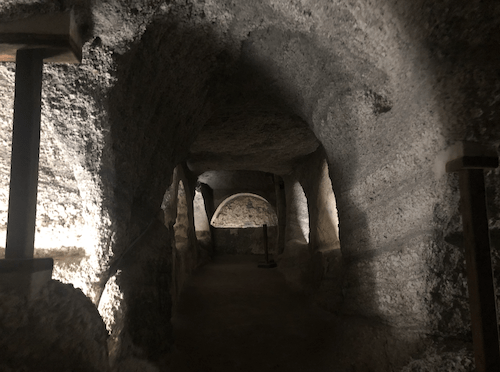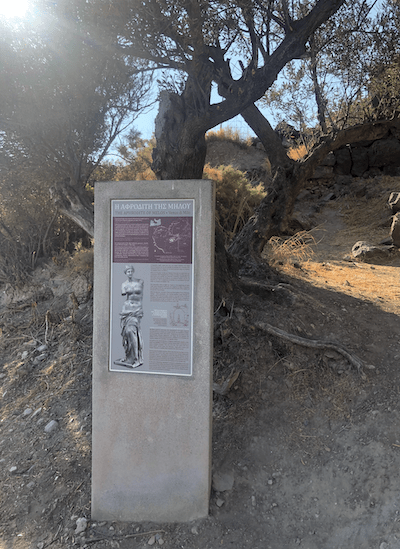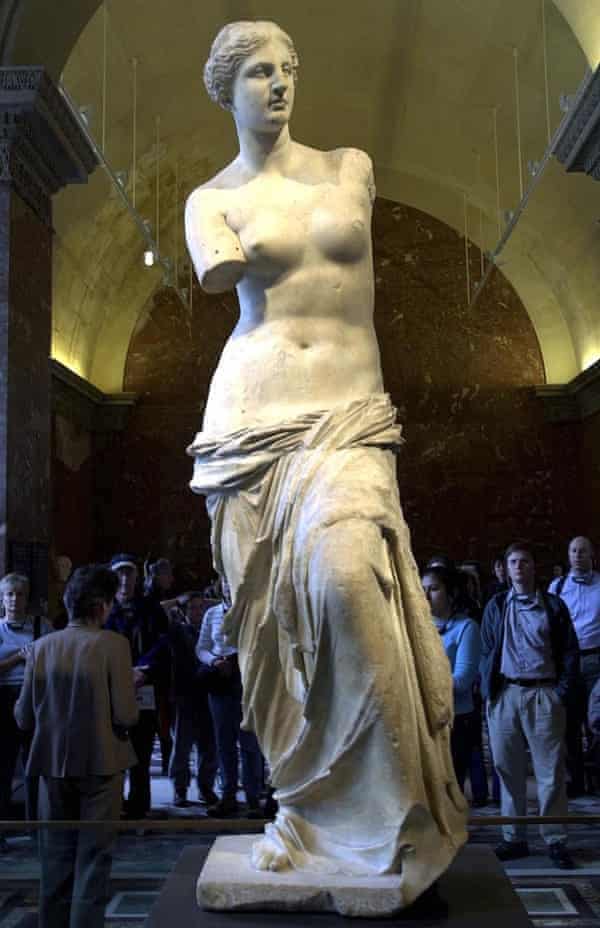| “You know… everyone likes to talk about the Parthenon/Elgin Marbles issue…it gets all the headlines, but when you think about it…” “I haven’t even had my coffee yet!” my poor husband interjected. “Right… Right… but the Venus de Milo….” “Hey – this is supposed to be a holiday!” You see dear reader, last week we were still celebrating the end of a successful Symposium with a holiday dash to the Greek islands. We had already enjoyed the Minoan archeological sites in Crete and the clear turquoise waters admired from a high perch in Naxos. So our final segment was the tiny inlet of Firopotamos on the volcanic island of Milos, picked for seclusion, poor internet and excellent cliff diving. The idea was NOT to work… but of course that’s a bit impossible when you are A) Me and B) on a historic Greek island. In my basic planning of the day, I’d already stumbled onto cool midday heat escapes into Christian catacombs… |
A conveniently located ancient theatre with impressive acoustics and a view to boot…
And the very spot where one of the most famous statues from antiquity – and arguably of all time – was discovered… sadly marked with a pithy plaque.
| Now, I’m going to admit something a bit embarrassing… I hadn’t realised that the Venus de Milo came from Milos until…. I saw all the little souvenirs upon arrival on the island. The moment of realisation was both exciting and immediately disappointing, because obviously I knew that famous hellenistic amputee was not here… or should I say there. The Parian work of Alexandros of Antioch, Venus de Milo (or a more accurately titled: Aphrodite of Milos), is one of the great draws of Paris’ main museum, the Louvre. Indeed, it was designed to be so. After the discovery of the statue by either Yorgos Kentrotas or Yorgos Bottonis (the origin story is still unclear), it was sold to a French sailor made its way up north… but it wasn’t an international icon until the French authorities decided to make it one. This was a masterful tactic to deal with the blow following a series of repatriation of famous works. Napoleon’s looted art collection was returned to their countries of origin, and in this move the museum lost some of its most iconic pieces, including Rome’s Laocoon and His Sons and Italy’s Venus de Medici. To cover their prides, they promoted the one that didn’t get away as a greater treasure than those lost… |
| So that, dear reader, is the story of our torsoed beauty. But where should Venus de Milo be today? Should she stay in Paris? Should she go home? And now that you know she was a marketing tool…. Does she have less value? As always, you can write me directly at [email protected] or reply to this email. |














No comments yet. You should be kind and add one!
Our apologies, you must be logged in to post a comment.